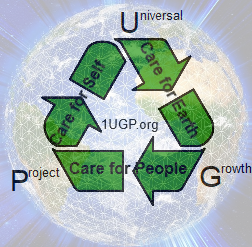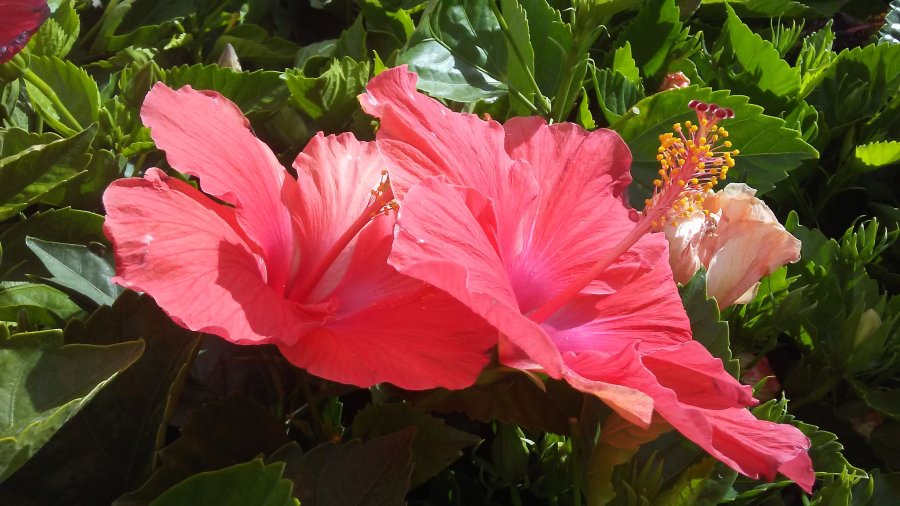If you want to look through 26 essential oils every home must have, check out this post.
If you want to get into the chemistry of plants, check out this post.
These terms were the most commonly used for my herbology certification, so I wanted to share them with you. If you want more terms that are not listed here, check out the extensive Wikipedia Glossary of Botanical Terms
Contents
A
- Adaptogen – helps the body cope with stress.
- Allopathic – manages or suppresses symptoms
- Alternate leaf arrangement – Leaves are not directly on opposite sides of the stem. They are staggered slightly.
- Analgesic – relieves pain
- Anaphrodisiac – reduces / suppresses libido
- Anesthetic – numbs, creates loss of sensation
- Annual – A plant that completes its life cycle within one calendar year. It goes from seed to seed in one growing season.
- Anthelmintic – kills and expels parasites and worms.
- Anther – The top of the stamen, which produces the pollen.
- Antarthritic – relieves arthritic symptoms
- Antibacterial (antibiotic)- kills bacteria or prevents their growth
- Anticatarrhal – removes mucus from the body, from all body organs
- Anticoagulant – thins the blood, reduces coagulation
- Antidepressant – alleviates low mood and anxiety
- Antidiarrheal – alleviates diarrhoea
- Antiemetic – relieves nausea and vomiting
- Antifungal – prevents and treats fungal infections, halts fungal growth
- Antihistamine – prevents or reduces an allergic (inflammatory) reaction
- Anti-infectious – fights or prevents an infection
- Anti-inflammatory – prevents or alleviates inflammation
- Anti-itch – see antihistamine
- Antimicrobial – kills and prevents the growth of microbes
- Antineuralgic – relieves pain derived from the nerves
- Antioxidant – helps slow / prevent cell damage from oxidation
- Antiparasitic – see anthelmintic
- Antiphlogistic – reduces fever and/or inflammation
- Antipruritic – relieves itching
- Antipyretic – reduces fever
- Antirheumatic – alleviates and prevents symptoms of rheumatism
- Antiseborrhoeic – alleviates or prevents seborrhea (excess sebum)
- Antiseptic – prevents the growth of microbes
- Antispasmodic – relaxes muscle spasms
- Antitussive – prevents or alleviates a cough
- Antiviral – prevents the growth of or alleviates viral infections
- Anxiolytic – reduces feelings and symptoms of anxiety
- Aperitifs – promotes appetite if eaten before food.
- Aphrodisiac – stimulates the libido
- Astringent – contracts and tones mucous membranes and the skin
- Ayurvedic – 5,000 year old Indian teachings
B
- Bactericidal – kills bacteria
- Biennial – A plant that completes its life cycle over 2 years. The first year is spent growing leaves, stems and roots. The second year is when the plant bolts upwards producing flowers and going to seed, after which the plant dies.
- Botany – understanding plants, plant biology & all aspects of plants (photosynthesizers)
- Bract – A modified leaf attached to the base or stalk of a flower.
- Bud – An undeveloped leaf or flower of a plant.
- Bulb – A specialized underground bud that sends down roots and stores water and nutrients.
C
- Calmative – Calms
- Carminative – prevents and expels intestinal gas
- Cellulose – The substance in plant cells that makes plants rigid and aids in keeping plants from collapsing.
- Cephalic – promotes blood flow to the head
- Choleretic – stimulates bile production
- Cholagogue – promotes the flow of bile from the gallbladder
- Cicatrisant – promotes healing by stimulating scar tissue formation
- Circulatory (stimulant) – aids the circulatory system (boosts circulation)
- Cooling – its use promotes a cooling sensation on the skin
- Cotyledon – The first leaves of a seed plant. These are also called the “seed leaves.”
- Cytophylactic – promotes the growth of new cells
D
- Decongestant – alleviates congestion in the nasal passages and airways
- Demulcent – soothing relieves irritation
- Depurative – purifies and detoxifies
- Detoxicant – see depurative
- Diaphoretic – promotes sweating (and therefore can help manage a fever)
- Digestive – aids the digestive system
- Disinfectant – kills bacteria
- Diuretic – increases urine production
E
- Eclectic herbalists – use the whole plant.
- Emersed Plant – A plant that is rooted in shallow water. Most of the vegetative growth is above water.
- Emmenagogue – promotes circulation to pelvis and uterus and stimulates menstruation
- Emollient – softens and soothes the skin
- Expectorant – helps the lungs bring up mucus, makes a cough productive
F
- Febrifuge – reduces a fever
- Fungicidal – see antifungal
G
- Galactagogue – Promotes milk flow
H
- Haemostatic – stops bleeding
- Hepatic – benefits the liver
- Holistic – a story or chapters of an illness and what contributed. Factors include: lifestyle, diet, exercise, mood, sleep.
- Hypertensive – increases blood pressure
- Hypnotic – calms, soothes
- Hypotensive – decreases blood pressure
I
- Immunostimulant – stimulates the activity of the immune system
- Insecticide – repels and/or kills insects
L
- Latin Terminology –
- Arial – herba / Leaves – folia / Flowers – flos / Fruit – fructus / Bark – cortex / Roots – radix / Rhizome – rhizoma / Bulbs – bulbus
- Binomials – Genus then species. Genus is always capital first letter. Species is not. Italics everything.
- Sp, spp = one or multiples of a Genus.
- Var. = variety
- X = hybrid
- Plant classification family name changes have changed over the years:
- Compositae – Asteraceae *
- Cruciferae – Brassicaceae
- Labiatae – Lamiaceae *
- Leguminosae – Fabaceae
- Umbelliferae – Apiaceae *
- Laxative – encourages peristalsis and bowel movements
- Lipolytic – breaks down fats
M
- Monosaccharides – The smallest possible form of sugar.
- Mucolytic – loosens and clears mucus from the airways
- Muscle relaxant – see antispasmodic
N
- Native plant – A plant that is historically found in its current area. These plants are generally good for an area, as they give competition to non-native plants.
- Nervine – nourishes the nervous system, calms and balances
- Non-native plant – Any plant that is not historically found in its current area. These plants are usually introduced into new areas by human activity or livestock.
- Noxious Weeds – are invasive, non-native plants that threaten agricultural crops, local ecosystems, or fish and wildlife habitats. The term ‘noxious weeds’ includes non-native, invasive grasses, flowering plants, shrubs, trees and aquatic plants. About half of all invasive, noxious weeds are escapees from gardens; the rest are plants accidentally introduced through human travel and trade.
O
- Oligosaccharides – < 10 monosaccharides
- Opposite leaf arrangement – Leaves are directly on opposite sides of the stem.
P
- Parthenocarpy – fruit without seeds (strawberry, banana, pineapple, oranges) aka a “non fertile” seed, aka shooting blanks
- Parasiticide – kills parasites
- Perennial – A plant that grows for 3 or more years, usually flowering each year
- Polysaccharides – > 10 monosaccharides
R
- Rays – Narrow flowers that appear as a single petal on members of the Asteraceae (Sunflower) family. An example is dandelion.
- Relaxant – Calms and relaxes
- Rhizome – A root-like stem that grows horizontally underground and produces new leaves and shoots.
- Roots – The underground parts of a plant that uptake nutrients and water.
- Rosette – The beginning formation of a plant after the seedling stage. It is a grouping of basal leaves.
- Rubefacient – promotes blood flow to the skin, causing reddening
- Runner – A creeping stem that sends down new roots at spaced intervals called nodes. These nodes can form new plants and detach from the parent plant.
S
- Sedative – calms and sedates
- Splenic – improves spleen health
- Stem – The main axis of a plant, the central stalk.
- Stimulant – stimulates the mind or body
- Stomachic – tones the stomach, balances activity and improves the appetite
- Stolon – A modified stem growing along the ground that develops new plants. An example is strawberry plants.
- Styptic – stops bleeding
- Submersed plant – Plants that develop completely under the surface of water. Leaves and flowers may eventually grow above the water surface.
- Sudorific – promotes sweating, see diaphoretic
T
- Terrestrial plants – Plants that grow on land, not in water.
- Therapeutic properties – classify a plant as an herb. Used as the whole plant.
- Tonic – restores health in general or has an affinity for a particular organ
U
- Uterine – improves the function of the uterus
V
- Vasoconstrictor – constricts blood vessels
- Vasodilator – dilates blood vessels
- Vermifuge – kills or expels parasites
- Vulnerary – promotes wound healing
W
- Weed – Any plant that crowds out cultivated or desired plants.
- Woody – Having bark-covered stems that do not die to the ground at the end of the growing season.


